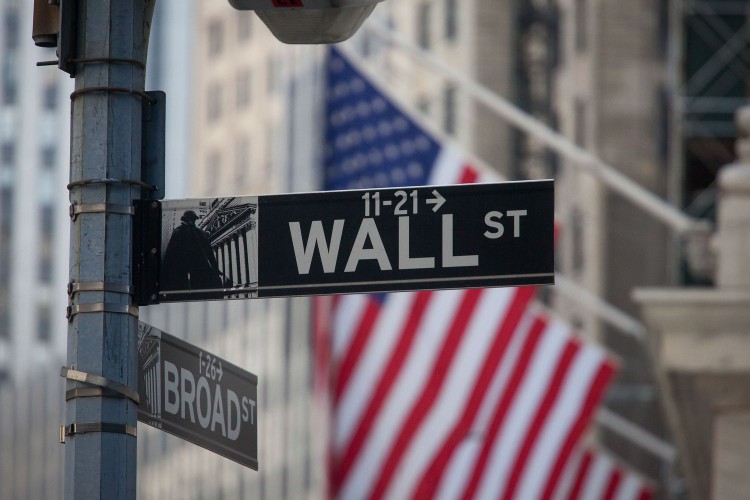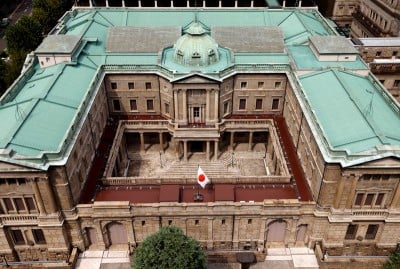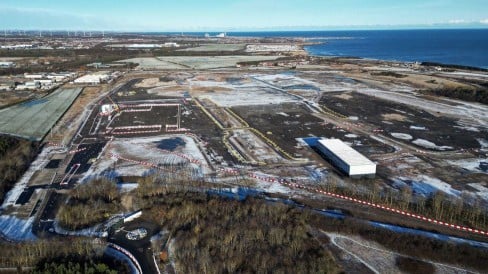
Michael Nagle/Bloomberg/Getty Images
Wall Street is often thought of as both the symbol and geographic center of American capitalism. Symbolically, Wall Street refers to all the banks, hedge funds, and securities traders that drive the stock market and the whole American financial system. Geographically, Wall Street is the center of Manhattan's Financial District. It runs east/west for eight blocks from Broadway to South Street.
The New York Stock Exchange (NYSE) is located on 11 Wall Street. Nearby, but still considered part of Wall Street, are six other businesses. The New York Federal Reserve Bank is at 33 Liberty Street. The Nasdaq is on 1 Liberty Street, Goldman Sachs is at 200 West Street, and JPMorgan Chase is at 277 Park Avenue. The NYMEX is at 300 Vessey Street. Even the Wall Street Journal is not on Wall Street itself—it's at 1211 Avenue of the Americas.
Way back when it all started, Wall Street ran along a physical wall built when New York was still a Dutch Colony. Then-Governor Peter Stuyvesant ordered a wooden wall that protected the lower peninsula from the British and Native Americans. It later became a street bazaar where traders met under a now-famous buttonwood tree. In 1792 these traders formalized the rules of the game and created the NYSE.
Key Takeaways
- Wall Street is the geographic center in New York for the nation’s largest financial companies.
- The NYSE is also located there.
- The two biggest financial crises linked to Wall Street have been the Great Depression of 1929 and the Great Recession of 2008.
How Wall Street Works
Wall Street includes the stock market, bond market, commodities market, futures market, and the foreign exchange market. The original purpose of the securities market was to raise funds for companies to grow, be profitable, and create jobs. Securities trading has become so profitable in and of itself that trades have been established for just about anything you can think of, and a lot of things you could never imagine.
What changed Wall Street? For one thing, the abolition of the Glass-Steagall Act in 1999. This allowed any bank to use depositors' savings to invest in complicated securities called "derivatives." They based their value on different types of loans, including credit card debt, corporate bonds, and mortgages.
Note
Unlike stocks and bonds, these derivatives were unregulated.
Wall Street and Stock Market Crashes
Deregulation was one reason for the 2008 financial crisis. The derivatives based on mortgages were called "mortgage-backed securities." They were guaranteed by another financial innovation called "credit default swaps." All of these were traded successfully on the secondary market until housing prices started to fall in 2006. The underlying mortgages started to default, and no one knew how to price the mortgage-backed securities. There were so many defaults that the companies, like AIG, who guaranteed the debt ran out of cash.
Wall Street panicked, global stock markets dropped, and banks stopped lending to each other. Creating the worst recession since the Great Depression. The only thing that stopped the panic was the federal government bailing out Wall Street with the TARP program in 2008, and restoring confidence with the Economic Stimulus Package in 2009.
The stock market crash of 1929 kicked off the Great Depression. It started on Oct. 24, 1929, a day known as Black Thursday. It worsened on Black Tuesday when the Dow lost all the gains of the year in just a few hours. Wall Street bankers had failed in trying to stop plummeting stock prices.
Many individual investors had put their life savings into the stock market. When they got wiped out, they lost confidence in Wall Street and the American economy. Others withdrew all their savings from banks, which then collapsed. Many people felt that Wall Street was the economy. It was only massive government spending on the New Deal and World War II that revived economic growth.
In 2010, Congress passed the Dodd-Frank Wall Street Reform Act to prevent another financial crisis by giving the federal government more oversight of Wall Street. For example, non-bank financial firms like hedge funds were required to register with the Securities and Exchange Commission and provide information about their trades and total holdings.
Note
If any financial firms got “too big to fail,” Dodd-Frank's Financial Oversight Committee would recommend they be regulated by the Federal Reserve.
Dodd-Frank required that the riskiest derivatives be regulated by the SEC or the Commodity Futures Trading Commission. It asked the agencies to set up a derivatives clearinghouse, like the stock exchange, to make these transactions more transparent.
The Occupy Wall Street Movement
Occupy Wall Street was another reaction to the financial crisis. Its "leaderless resistance movement" began on Sept. 17, 2011, with a non-violent occupation of Liberty Square in New York's Financial District. It spread to over 1,500 cities around the world.
Since then, the group has splintered into many factions. Its core tenets about income inequality, the 1%, and the influence of big money on politics have remained. Its call for a higher national minimum wage was taken up by many cities, states, and corporations. The Occupy movement also influenced lawmakers to look at forgiving student debt.
Frequently Asked Questions (FAQs)
What is Black Wall Street?
Black Wall Street refers to the neighborhood of Greenwood in Tulsa, Oklahoma. In the early 20th century, the neighborhood was likely the most prosperous Black community in the U.S. Largely due to intense segregation throughout society, Black entrepreneurs concentrated their investments in Greenwood and created a strong local economy, complete with high-paying jobs for residents.
Unfortunately, the economic success of these Black Americans reinvigorated White supremacists in the area. On May 30, 1921, an interaction between two teenagers kicked off 24 hours of intense racial violence dubbed the "Tulsa Massacre." White mobs looted homes and conducted the first-ever aerial bombing of a U.S. city, burning 35 blocks of Black Wall Street to the ground.
What time does Wall Street open?
Wall Street refers to many different institutions, so it doesn't have a set open or close time. For example, the New York Stock Exchange opens for trading at 9:30 a.m. EST and closes at 4 p.m., Monday through Friday. The NYMEX, on the other hand, trades 23 hours per day, Monday through Thursday. (Trading occurs on an altered schedule on Friday and Sunday.)






